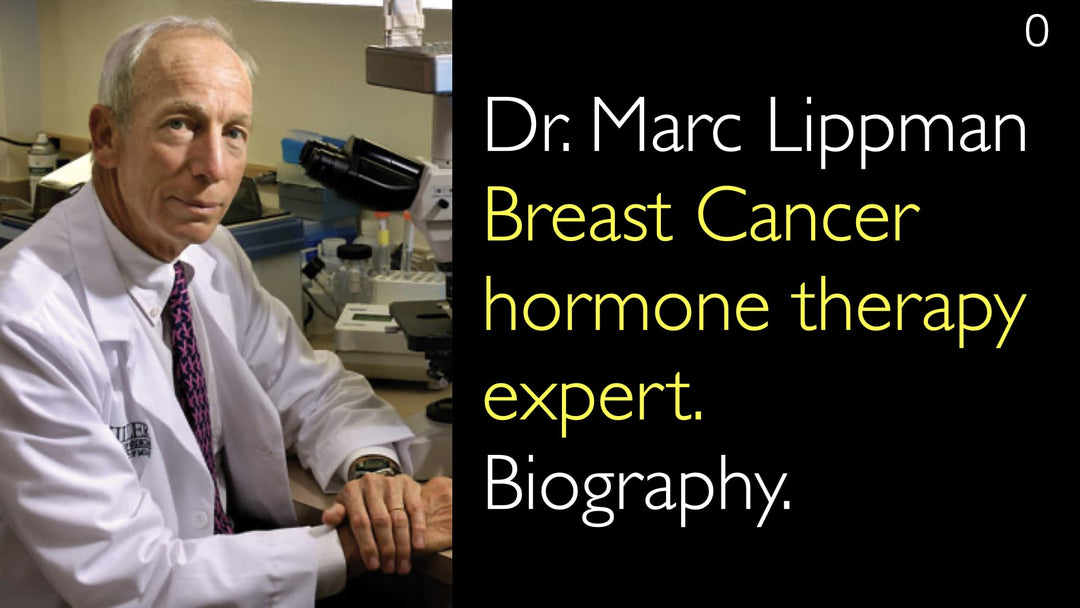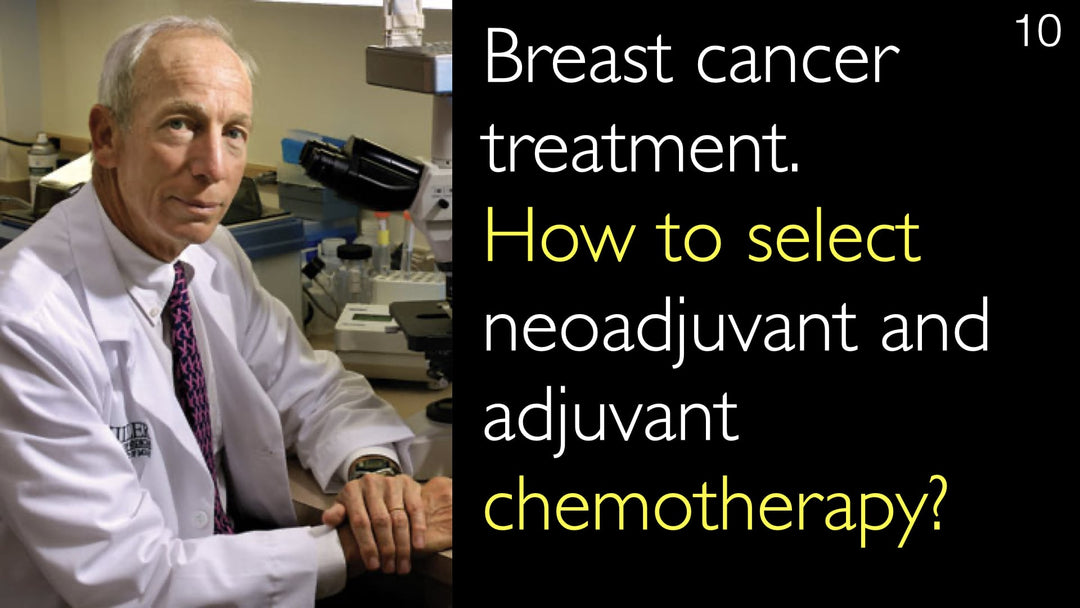Leading expert in radiation oncology, Dr. Stephan Bodis, MD, explains effective treatment strategies for locally recurrent breast cancer, highlighting radiotherapy's superiority over chemotherapy, mastectomy as gold standard, and innovative approaches like hyperthermia with hypo-fractionated radiation for patients with prior chest wall irradiation.
Advanced Treatment Options for Locally Recurrent Breast Cancer
Jump To Section
- Locoregional Breast Cancer Recurrence Rates
- Why Radiotherapy Outperforms Chemotherapy
- Mastectomy as Primary Treatment
- Innovative Radiation Therapy Approaches
- Hyperthermia with Hypo-fractionated Radiotherapy
- Managing Radiation Toxicity Risks
- Importance of Medical Second Opinions
- Full Transcript
Locoregional Breast Cancer Recurrence Rates
Approximately 30% of breast cancer patients experience locoregional recurrence, where cancer returns either in the breast tissue or nearby chest wall areas. Dr. Stephan Bodis, MD, emphasizes this occurs particularly after breast-conserving surgery, creating complex treatment decisions. The recurrence patterns vary based on initial treatment - some patients experience recurrence within preserved breast tissue while others develop chest wall tumors post-mastectomy.
Why Radiotherapy Outperforms Chemotherapy
Dr. Stephan Bodis, MD, states radiation therapy proves significantly more effective than chemotherapy for local breast cancer recurrence, with chemotherapy lacking strong evidence for this application. "Radiotherapy to treat recurrent breast cancer is much more effective than we previously thought," notes Dr. Bodis. This effectiveness persists even when cancer returns in previously irradiated areas, though requiring specialized approaches to minimize toxicity.
Mastectomy as Primary Treatment
For patients with recurrence after breast-conserving therapy, Dr. Stephan Bodis, MD, considers mastectomy with reconstruction as the gold standard. "The standard practice still should be to convince the patient that mastectomy should be done," he advises, noting this approach offers definitive treatment with predictable outcomes. Cosmetic reconstruction options should align with patient preferences and surgical recommendations, creating personalized treatment pathways.
Innovative Radiation Therapy Approaches
When patients decline mastectomy, hypofractionated small-volume radiotherapy emerges as an investigational option, though Dr. Bodis stresses it should only be administered within clinical trial protocols. Two European protocols currently guide this approach for local recurrences. For patients with chest wall recurrence post-mastectomy and prior radiation, conventional re-irradiation proves too toxic, necessitating alternative strategies.
Hyperthermia with Hypo-fractionated Radiotherapy
Dr. Stephan Bodis, MD, reports exceptional results combining superficial hyperthermia with modest-dose hypo-fractionated radiotherapy, achieving over 90% local control in their 30 consecutive patients. This Netherlands-developed approach minimizes toxicity while maintaining efficacy for chest wall recurrences in previously irradiated areas. Patients report excellent cosmetic outcomes and the method is becoming treatment of choice in several European centers.
Managing Radiation Toxicity Risks
Full-course re-irradiation carries severe risks including rib necrosis, chronic chest wall infections, and impaired wound healing. Dr. Stephan Bodis, MD, emphasizes these complications necessitate careful patient selection and technique modification. The hyperthermia-hypofractionation protocol specifically addresses these concerns, allowing effective retreatment while preserving tissue integrity and patient quality of life.
Importance of Medical Second Opinions
Given the complexity of recurrent breast cancer treatment, Dr. Stephan Bodis, MD, underscores the value of second opinions to confirm optimal radiation plans and combination therapies. Precision medicine approaches require thorough evaluation of all options, particularly for patients with metastatic lesions or challenging recurrence patterns. Second opinions help ensure access to the most advanced protocols like hyperthermia-enhanced radiotherapy.
Full Transcript
Radiotherapy is more effective than chemotherapy in local relapse of breast cancer. But surgical treatment, mastectomy, is the best therapy. Radiotherapy toxicity is of concern in locally recurrent breast cancer treatment.
Locally recurrent breast cancer treatment options include various approaches. 30% of breast cancer patients develop local breast cancer recurrence, while others develop regional breast cancer recurrence. Radiotherapy to treat recurrent breast cancer is more effective than chemotherapy, especially for patients with local recurrence after previous radiation to the chest wall.
Dr. Anton Titov, MD: Let's move to breast cancer treatment. 30% of breast cancer patients develop local breast cancer recurrence, and they can develop regional breast cancer recurrence. This is called locoregional recurring breast cancer. In these patients, breast cancer returns.
Local recurrence of breast cancer is a particular issue sometimes after breast-sparing surgery. You used several innovative radiation therapy strategies in recurring breast cancer. Sometimes breast cancer tumors come back locally or regionally in the chest wall. How effective is radiation therapy for recurrent breast cancer, especially in locoregional recurrence of breast cancer?
Dr. Stephan Bodis, MD: I think radiotherapy to treat recurrent breast cancer is much more effective than we previously thought. Radiation therapy for relapse in breast cancer is definitely more effective than chemotherapy. Chemotherapy has proven to be not based on evidence as a treatment for local recurrence of breast cancer.
There are several settings in local recurrence of breast cancer. We have patients with breast conservative treatments who have a breast cancer recurrence within the breast. These patients sometimes would like to preserve the breast. That's one setting.
We have breast cancer patients who had a breast-conserving treatment and then have a breast cancer recurrence. Sometimes these patients accept mastectomy, and then treatment of breast cancer is straightforward. We also have patients who had mastectomy in a locally advanced breast cancer setting and have local recurrence after previous radiation to the chest wall.
Dr. Stephan Bodis, MD: For the first setting, I think the standard practice still should be to convince the patient with breast cancer recurrence that mastectomy should be done. Cosmetic reconstruction after breast cancer surgery should be done according to the patient's desires and the recommendation of the breast cancer surgeon.
Any cosmetic procedure to reconstruct the breast after mastectomy can be okay. This is established and accepted as evidence-based breast cancer treatment process. Sometimes patients with recurrent breast cancer do not accept a mastectomy followed by cosmetic surgery. Then hypofractionated small volume radiotherapy can be an option, but only in breast cancer clinical trial treatment protocols.
I don't think hypo-fractionated small volume radiotherapy should be offered to patients with locally recurrent breast cancer outside clinical trial protocols. There are several adopted concepts for hypo-fractionated small volume radiotherapy in local recurrence of breast cancer. In Europe, we have two current protocols that could be used as a basis for approach to treat local recurrent breast cancer by radiation therapy.
I don't speak about breast cancer patients who undergo breast conservative treatment initially followed by radiotherapy. If these patients have local recurrence of breast cancer, sometimes they accept mastectomy. That's the definitive treatment of recurrent breast cancer.
Only if you have very bad prognostic features for recurrent breast cancer, such as R1 resection or other biological pathological features, then chest wall radiation therapy needs to be offered as an additional treatment.
Dr. Stephan Bodis, MD: I do speak now of the breast cancer patients who had mastectomy but still have a chest wall recurrence despite previous radiotherapy. Then a full second course of radiotherapy is not acceptable because toxicity is too high.
Long-term toxicity to treat local recurrence of breast cancer is of concern, including necrosis to the ribs, serious infections of the chest wall, and long wound healing complications. For local recurrence of breast cancer after previous radiation therapy to the chest wall, the standard treatment should be superficial hyperthermia with a modest dose of hypo-fractionated ionizing radiotherapy.
This is probably one of the best established methods to treat locally recurrent breast cancer, especially when previous therapy included radiation treatment. Meta-analysis of treatment results shows it's the treatment of choice in some countries like the Netherlands.
Dr. Stephan Bodis, MD: Over the last two and a half years, we have successfully treated by radiotherapy with hyperthermia at least 30 consecutive patients with locally recurrent breast cancer. The local control of breast cancer recurrence is excellent, above 90%. Cosmetic outcome of recurrent breast cancer treatment by hyperthermia and hypo-fractionated radiotherapy is very good according to patient assessment.
Dr. Anton Titov, MD: These are very good results of treatment of locally recurrent breast cancer, certainly. Locally recurrent breast cancer radiotherapy options show that radiation therapy is effective in local chest wall breast cancer relapse, especially when combined with hyperthermia.







